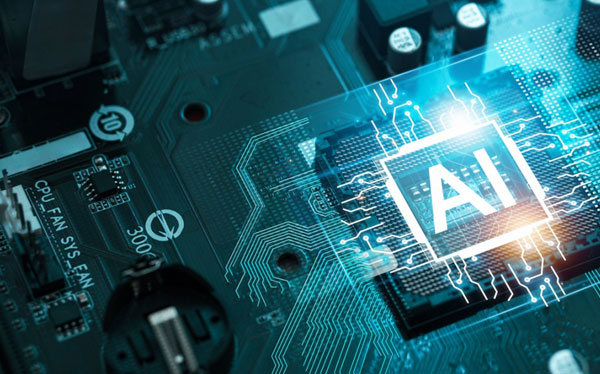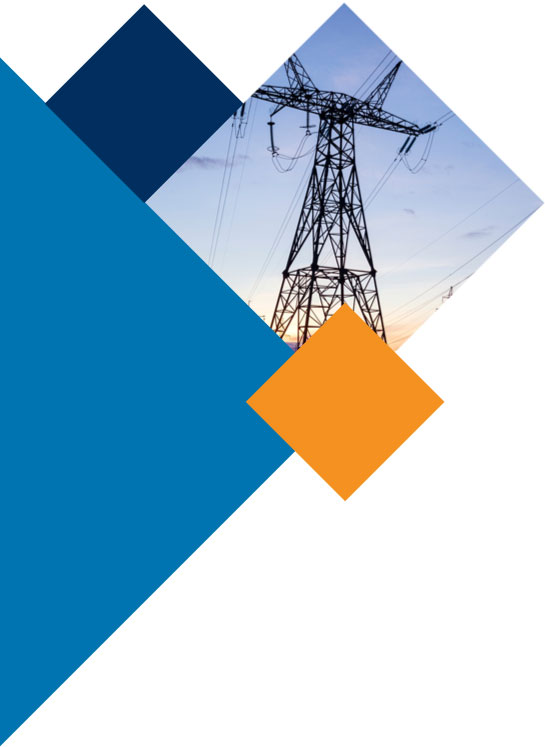The power behind progress: Why energy capacity is a major hurdle to AI-related growth

7 Nov 2024
GRE
In today's business landscape, one resource quietly underpins everything from data-driven decision-making to global logistics: electricity. Without sufficient power, even the most innovative industries can't thrive. For electric cooperatives, meeting the demands of growing businesses, especially in an era defined by artificial intelligence (AI), requires careful planning and strategic investment.
But, as AI offers unprecedented revenue potential for regions attracting large-scale projects, it also brings complex challenges that can strain local power grids and leave lasting impacts on communities.
Member electric cooperatives are uniquely positioned to balance growth with sustainability. They can prioritize localized strategies that support consistent, reliable energy loads rather than risking disruptions from the massive and unpredictable demands of AI-driven operations. With over $600 billion in capital investment into AI investments globally expected by 2028, it might seem like you're falling behind if you're not powering AI.
Yet, for many Minnesota cooperatives, the focus isn't growth at any cost. It's about attracting the right kind of growth — the kind that strengthens, not stresses, the community's energy infrastructure.
The role of AI, data centers and power infrastructure
The rapid rise of AI and the increasing reliance on data centers have triggered a significant surge in electricity demand — a trend that's only expected to grow. As Great River Energy and its member-owner cooperatives look ahead, they recognize the potential opportunities this demand represents but have a duty to their members to remain mindful of capacity constraints and the infrastructure improvements necessary to support future growth. Electric cooperatives can navigate the challenges ahead by focusing on realistic, informed strategies and ensuring a stable and efficient power supply.
The surge in electricity demand
AI is a major driver of increased power consumption. For instance, a single ChatGPT query requires nearly 10 times as much electricity as a typical Google search. This difference highlights a larger trend: As AI advances, data centers' power demands are skyrocketing.
Goldman Sachs Research predicts that data center power demand will grow by 160% by 2030, with AI expected to account for 19% of that demand by 2028. While data centers once displayed a stable appetite for power, the efficiency gains that once offset increasing workloads have slowed since 2020. As a result, the power consumed by data centers has risen, and this trend is likely to continue as AI becomes more integrated into various sectors.
Current state of the US power grid
The U.S. power grid, the backbone of the nation's economy, faces significant challenges as it grapples with rising electricity demand. Over 70% of transmission lines are over 25 years old, and many are nearing the end of their 50-80-year operational lifespans. This aging infrastructure makes the grid more vulnerable to outages and disruptions, posing risks to both safety and economic stability.
To address these concerns, the U.S. Department of Energy has launched the Grid Resilience and Innovation Partnerships Program to strengthen grid resilience and reliability. However, the power grid still faces a tough road ahead, particularly as the demand for electricity rises after a decade of modest demand. Data centers, powered by the growth of AI, are expected to be a major contributor to this demand, requiring significant investments in both generation capacity and infrastructure improvements.
Infrastructure needs and capacity challenges
Meeting the growing electricity demand will require substantial infrastructure investments. U.S. utilities are projected to need around $50 billion in new generation capacity to support data centers alone. Additionally, the rise in data center power consumption is expected to drive an increase in natural gas demand, which will necessitate new pipeline capacity.
Without the proper infrastructure improvements, power grid disruptions could lead to operational losses, increased costs and data corruption, particularly in high-reliability industries such as healthcare. Modernizing and expanding the power grid is a priority for many utility providers.
But for Great River Energy's member cooperatives, decisions are made with their member’s needs in mind. If the member cooperatives view these infrastructure improvements as critical to its success, then it will become a priority.
Tools and solutions for managing AI-induced demand
If a site selector approached one of our member cooperatives with an AI-related project that could significantly increase load demand and potentially disrupt the grid, here are some potential solutions to effectively manage the surge in demand:
- High-efficiency power converters: Advanced technologies like silicon carbide and gallium nitride can significantly reduce energy loss, increasing data center efficiency.
- Uninterruptible power supplies (UPS): Ensuring a consistent power supply during grid failures is critical for maintaining the integrity of AI operations. Modern UPS systems with advanced batteries and energy storage solutions provide reliable backup power.
- Energy storage systems: These systems play a vital role in balancing supply and demand on power grids, providing a stable power supply for AI applications and other high-demand industries.
- Smart grid technologies: Integrating AI with the power grid can enhance reliability through predictive maintenance, load forecasting and real-time monitoring. This dynamic approach to power distribution optimizes energy usage and reduces the risk of blackouts.
- Advanced cooling solutions: Efficient cooling systems are essential for managing the thermal loads generated by data centers. Sustainable cooling technologies like solar or geothermal-driven systems can reduce emissions and lower operating costs.
Balancing progress and power
As AI continues revolutionizing industries and driving electricity demand, Great River Energy's member cooperatives face a pivotal moment. The challenge lies in making deliberate choices about growth — embracing opportunities that align with community values while avoiding the pitfalls of overextending power grids. It's not just about chasing the next big project; it's about ensuring that any new development strengthens, rather than strains, the infrastructure that cooperative members rely on.
Through collaboration and strategic planning, Great River Energy and its member cooperatives are well-positioned to meet these challenges head-on. By leveraging innovative tools, such as smart grid technologies and high-efficiency power systems, cooperatives can manage increased demand effectively.
More importantly, by maintaining open communication with stakeholders and focusing on long-term sustainability, they can ensure that both members and the communities they serve benefit from the growth that AI and data centers bring if they choose to do so.
In the end, it's about more than just powering progress — it's about making sure that progress powers the communities in a way that's stable, reliable and forward-thinking. With the right approach, Great River Energy's cooperatives can continue to thrive in a rapidly evolving energy landscape.
More Topics




